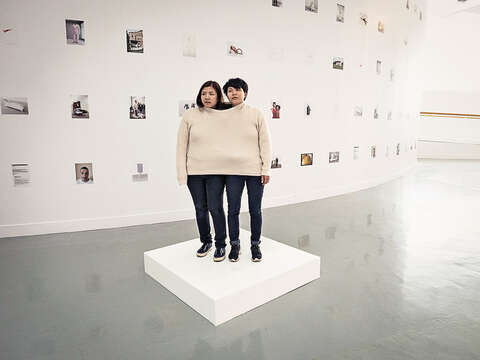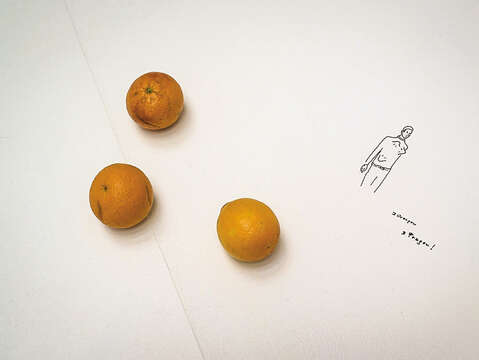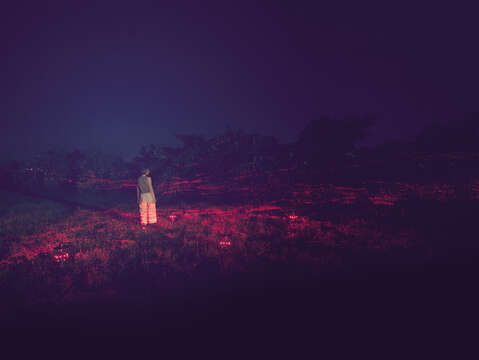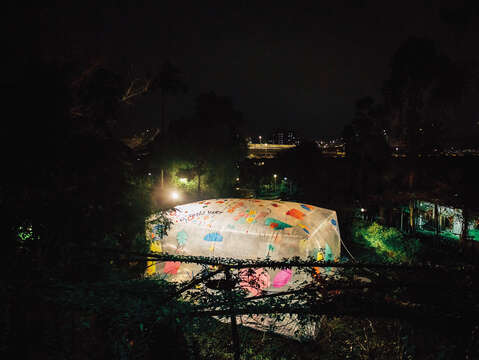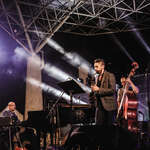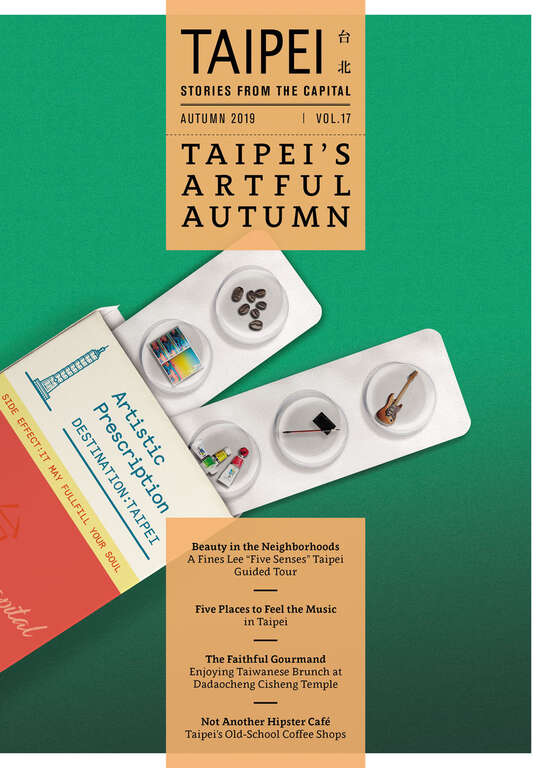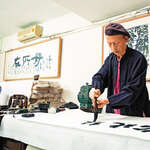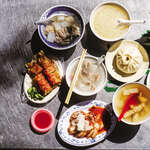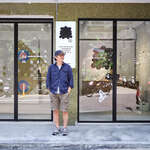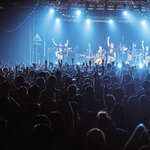Post date:2019-09-18
1012
TAIPEI #17 (2019 Autumn)
An Art Festival Never Sleeps — Nuit Blanche Taipei
WORDS BY Takayuki Shinoyama
PHOTOS BY Nuit Blanche Taipei 2019
TRANSLATION BY JR Wu, Joe Henley
“Nuit Blanche,” or White Night as it means in English, has become a spreading phenomenon around the world recently. Museums, galleries, and art centers that usually open only during the daytime will open their doors at the witching hour to hold special events at night and light up the night together, inviting expats and citizens to join in a sleepless night of unparalleled wonder.
Nuit Blanche, a collection of various artistic events free to the public, has been held in Taipei every year since 2016; on the first Saturday in October varied forms of artistic events will be conducted all night, and the public can freely attend and participate in this festival. Nuit Blanche Taipei aims to eliminate the barrier between entertainment and art by utilizing public space on the street so that people can embrace the art in the most natural and yet ephemeral way possible. Over 200,000 people participated in past events each year, and in 2018, attendance even exceeded 400,000, making it the largest art-related event on the street in Taipei history.
Continuing its popularity, Nuit Blanche Taipei will be kicking off from October 5 in 2019. Here are some highlights of the event.
BUILDING UP THE STAGE IN NEWLY-DEVELOPED AREAS
In the past, Nuit Blanche Taipei was usually held in places related to history and culture. However, the stage this year will be set in Dazhi (大直) and Neihu (內湖), newly developed areas in Taipei known for their booming science and technology sector.
While technology and the economy are rising quickly in Dazhi and Neihu, cultural and artistic fields are less developed compared to other areas in Taipei. The common scene in the areas are usually technology companies and lots of white-collar workers, featuring some breakfast shops, cafés, restaurants, and bars that target office workers.
These little shops, will be full of people during the daytime but soon become deserted after the working hours when those salary men and women return home. It is considered as a “third space”, which is different from the basic living area as well as the office areas where people stay for a long time during the day. Instead, the third space serves as a functional but limited social space where people meet with each other solely while working. Nuit Blanche Taipei chose Neihu and Dazhi in the hope that these large spaces could be used effectively, not only during daytime but also at night, and that they could freely develop their own art scene without boundaries. It is also important for the people from Dazhi and Neihu to create their own unique identity and sense of belonging to embody the significant concept of contemporary art that — “Everyone is an artist.”
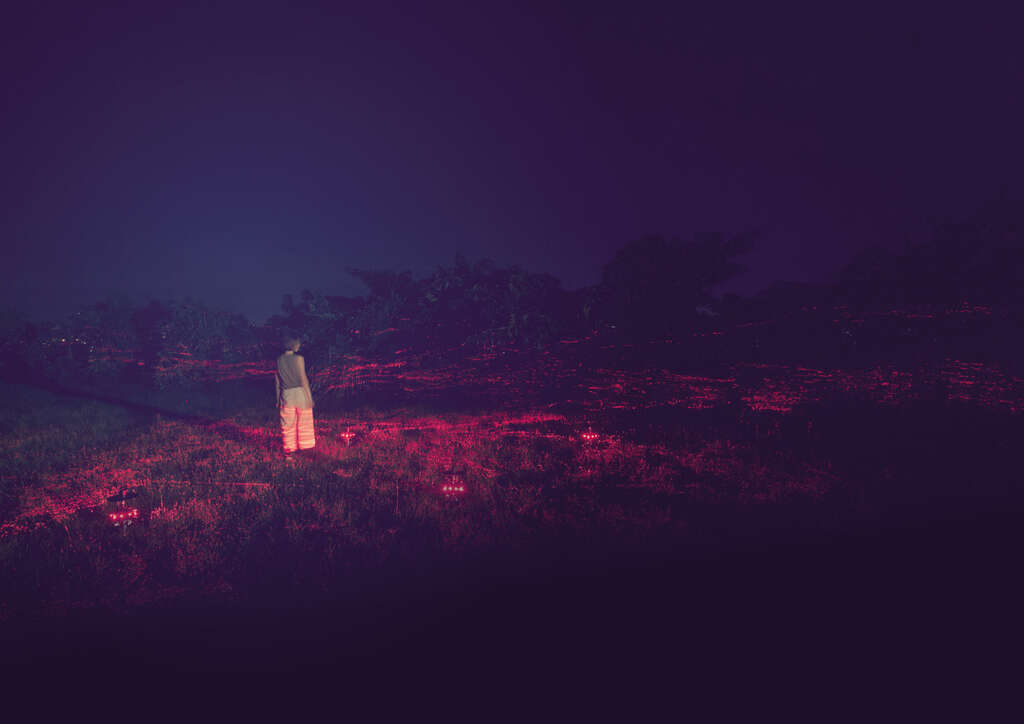 ▲ Quasi Land, one of the works of Nuit Blanche Taipei created by Kou Tak -Leong, use both artificial and natural light as the element to create a field where audience can walk in, stay and enjoy the art.
▲ Quasi Land, one of the works of Nuit Blanche Taipei created by Kou Tak -Leong, use both artificial and natural light as the element to create a field where audience can walk in, stay and enjoy the art.
EXPLORING THE DIVERSITY OF THE CITY
The theme of this year’s event is “double-sided ballet”, showcasing the diversity of Taipei. The concept is based on the theory of “Body Ballet” and “Place Ballet” advocated by geographer David Seamon.
“Body Ballet” is characterized by the “individual body” moving through the space. The actions we perform routinely are caused by habits, and will create a unique rhythm according to a person’s work, pastimes, lifestyle, and religion. For instance, you might get up at a predetermined time, go to work in a certain way, and return home at a certain hour and so on. These actions were named “Body Ballet” because it has a pattern of movement and rhythm just like a ballerina has to follow the choreography.
Meanwhile, “Place Ballet” is a series of body ballet, such as getting up in the morning and going to work repeatedly for a long time in a specific location. It is a specific rhythm which spreads from individual to the community and the whole of society, and a characteristic is born and a sense of belonging cultivated as a life rhythm is created among people when the place ballet is formed.
By incorporating these concepts this year, Nuit Blanche Taipei hopes a new “Body Ballet” will be born in Dazhi and Neihu, and expects that “Place Ballet” will metamorphose into much more than just going to work and returning home. It requires lots of people to participate in the event to reach this goal, and if all goes according to plan, there will be more and more people, locals and those from abroad alike, who will be introduced to these emerging aspects of a new society in addition to the core of technology and commercial development.
 ▲ There is no set format for the activities in Nuit Blanche Taipei. Even everyday items like plastic bottles can be an essential element.
▲ There is no set format for the activities in Nuit Blanche Taipei. Even everyday items like plastic bottles can be an essential element.
ELIMINATING BARRIERS BETWEEN ENTERTAINMENT AND ART
“Nuit Blanche Taipei” has invited Hu Chao Sheng (胡朝聖), an artist with a master’s degree from the Fashion Institute of Technology in New York, to be its art director for 2019.
As the event emphasizes the characteristics of participation as always, Director Hu hopes that participants can become citizen curators of art and culture. By creating art pieces/activities to develop a place ballet in Dazhi and Neihu, it will encourage local residents to participate in public events and find the distinguishing features of themselves and their living neighborhoods.
An example of this is a project planned by Japanese artist Michiyoshi Isozaki who designed a plastic dome where participants can go in and decorate it without any prescribed limitations. With the help from the public, a piece of art will be completed in an unconstrained way.
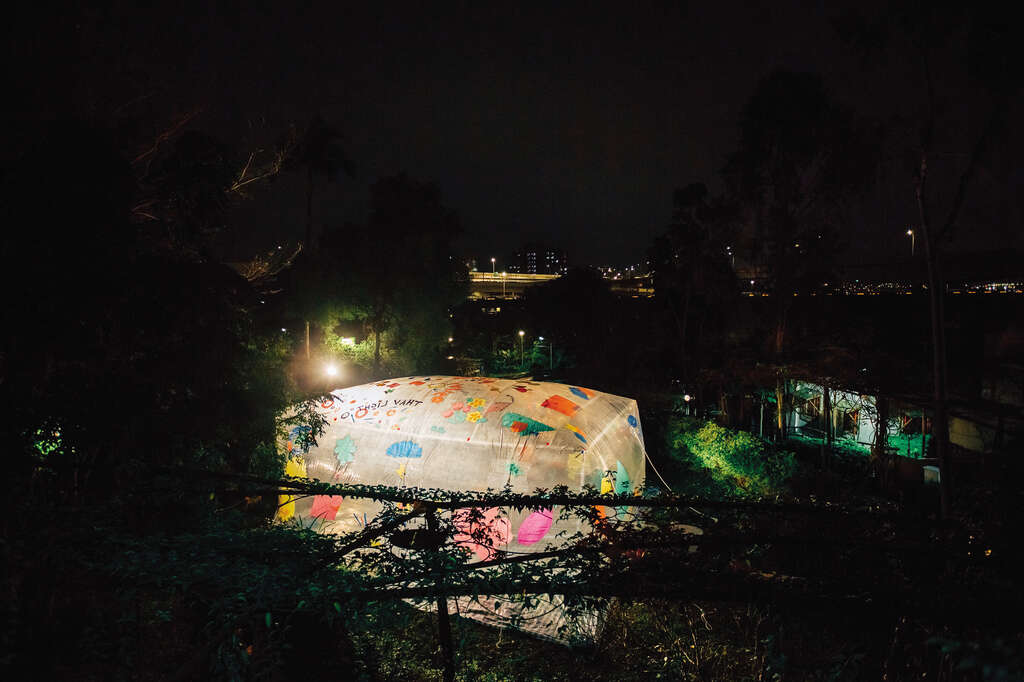 ▲ Japanese artist Michiyoshi Isozaki designed a magnificent plastic dome, allowing people to decorate it and participate in the creation of art.
▲ Japanese artist Michiyoshi Isozaki designed a magnificent plastic dome, allowing people to decorate it and participate in the creation of art.
In addition, “One Minute Sculpture”, planned by Austrian artist Erwin Wurm, will take place in the open square at MRT Jiannan Road Station (捷運劍南路站). This is a plan in which wares such as wooden boxes, books, fruits and clothes are prepared on the stage, and audiences can join the performance freely by acting out instructions written on a note. They will have to maintain a posture for one whole minute on the wooden boxes, making everyone who joins the performance a temporary piece of sculpted art. The instructions will be challenging but interesting, such as putting three oranges on one’s head or squeezing two people into one sweater. This “two-way art” will allow people to spontaneously create art that, like the cherry blossoms, will come to life and then promptly fade into memory, until the next instance of creation brings those cherished memories rushing back.
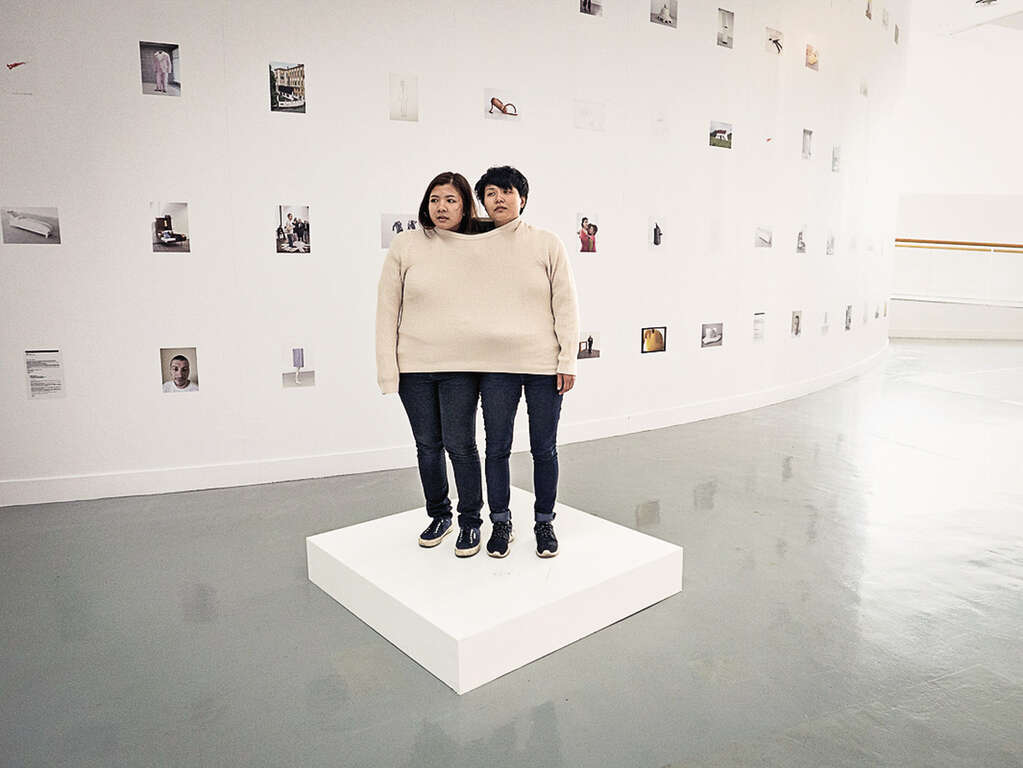
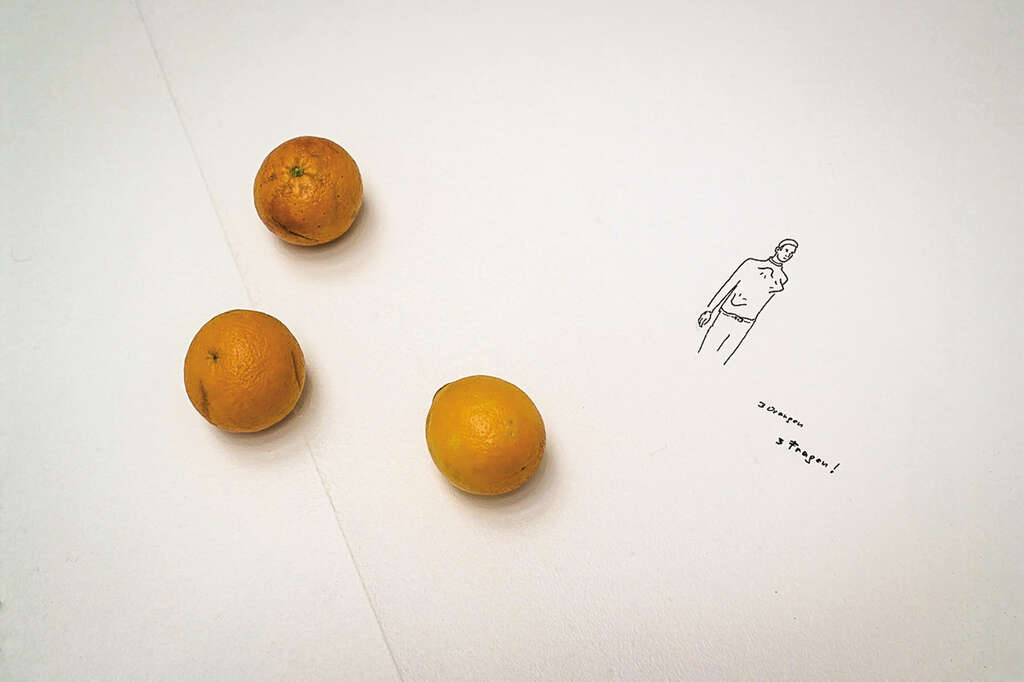 ▲ One Minute Sculpture uses the most common things in life as props, inviting the audience to be a part of the performance.
▲ One Minute Sculpture uses the most common things in life as props, inviting the audience to be a part of the performance.
At Nuit Blanche Taipei 2019, a new feature of Dazhi and Neihu is expected to be born as the gap between the participants and art is closed to a new level of proximity. The concept of contemporary art “everyone is an artist” will become reality and a new facet of the daily lives of those in these once very business-like districts. It is a great opportunity for visitors to experience a slightly different atmosphere of Taipei. Be sure to take this chance to feel the capital through this artistic and wondrous night.
An Art Festival Never Sleeps — Nuit Blanche Taipei
WORDS BY Takayuki Shinoyama
PHOTOS BY Nuit Blanche Taipei 2019
TRANSLATION BY JR Wu, Joe Henley
“Nuit Blanche,” or White Night as it means in English, has become a spreading phenomenon around the world recently. Museums, galleries, and art centers that usually open only during the daytime will open their doors at the witching hour to hold special events at night and light up the night together, inviting expats and citizens to join in a sleepless night of unparalleled wonder.
Nuit Blanche, a collection of various artistic events free to the public, has been held in Taipei every year since 2016; on the first Saturday in October varied forms of artistic events will be conducted all night, and the public can freely attend and participate in this festival. Nuit Blanche Taipei aims to eliminate the barrier between entertainment and art by utilizing public space on the street so that people can embrace the art in the most natural and yet ephemeral way possible. Over 200,000 people participated in past events each year, and in 2018, attendance even exceeded 400,000, making it the largest art-related event on the street in Taipei history.
Continuing its popularity, Nuit Blanche Taipei will be kicking off from October 5 in 2019. Here are some highlights of the event.
BUILDING UP THE STAGE IN NEWLY-DEVELOPED AREAS
In the past, Nuit Blanche Taipei was usually held in places related to history and culture. However, the stage this year will be set in Dazhi (大直) and Neihu (內湖), newly developed areas in Taipei known for their booming science and technology sector.
While technology and the economy are rising quickly in Dazhi and Neihu, cultural and artistic fields are less developed compared to other areas in Taipei. The common scene in the areas are usually technology companies and lots of white-collar workers, featuring some breakfast shops, cafés, restaurants, and bars that target office workers.
These little shops, will be full of people during the daytime but soon become deserted after the working hours when those salary men and women return home. It is considered as a “third space”, which is different from the basic living area as well as the office areas where people stay for a long time during the day. Instead, the third space serves as a functional but limited social space where people meet with each other solely while working. Nuit Blanche Taipei chose Neihu and Dazhi in the hope that these large spaces could be used effectively, not only during daytime but also at night, and that they could freely develop their own art scene without boundaries. It is also important for the people from Dazhi and Neihu to create their own unique identity and sense of belonging to embody the significant concept of contemporary art that — “Everyone is an artist.”
 ▲ Quasi Land, one of the works of Nuit Blanche Taipei created by Kou Tak -Leong, use both artificial and natural light as the element to create a field where audience can walk in, stay and enjoy the art.
▲ Quasi Land, one of the works of Nuit Blanche Taipei created by Kou Tak -Leong, use both artificial and natural light as the element to create a field where audience can walk in, stay and enjoy the art.EXPLORING THE DIVERSITY OF THE CITY
The theme of this year’s event is “double-sided ballet”, showcasing the diversity of Taipei. The concept is based on the theory of “Body Ballet” and “Place Ballet” advocated by geographer David Seamon.
“Body Ballet” is characterized by the “individual body” moving through the space. The actions we perform routinely are caused by habits, and will create a unique rhythm according to a person’s work, pastimes, lifestyle, and religion. For instance, you might get up at a predetermined time, go to work in a certain way, and return home at a certain hour and so on. These actions were named “Body Ballet” because it has a pattern of movement and rhythm just like a ballerina has to follow the choreography.
Meanwhile, “Place Ballet” is a series of body ballet, such as getting up in the morning and going to work repeatedly for a long time in a specific location. It is a specific rhythm which spreads from individual to the community and the whole of society, and a characteristic is born and a sense of belonging cultivated as a life rhythm is created among people when the place ballet is formed.
By incorporating these concepts this year, Nuit Blanche Taipei hopes a new “Body Ballet” will be born in Dazhi and Neihu, and expects that “Place Ballet” will metamorphose into much more than just going to work and returning home. It requires lots of people to participate in the event to reach this goal, and if all goes according to plan, there will be more and more people, locals and those from abroad alike, who will be introduced to these emerging aspects of a new society in addition to the core of technology and commercial development.
 ▲ There is no set format for the activities in Nuit Blanche Taipei. Even everyday items like plastic bottles can be an essential element.
▲ There is no set format for the activities in Nuit Blanche Taipei. Even everyday items like plastic bottles can be an essential element.ELIMINATING BARRIERS BETWEEN ENTERTAINMENT AND ART
“Nuit Blanche Taipei” has invited Hu Chao Sheng (胡朝聖), an artist with a master’s degree from the Fashion Institute of Technology in New York, to be its art director for 2019.
As the event emphasizes the characteristics of participation as always, Director Hu hopes that participants can become citizen curators of art and culture. By creating art pieces/activities to develop a place ballet in Dazhi and Neihu, it will encourage local residents to participate in public events and find the distinguishing features of themselves and their living neighborhoods.
An example of this is a project planned by Japanese artist Michiyoshi Isozaki who designed a plastic dome where participants can go in and decorate it without any prescribed limitations. With the help from the public, a piece of art will be completed in an unconstrained way.
 ▲ Japanese artist Michiyoshi Isozaki designed a magnificent plastic dome, allowing people to decorate it and participate in the creation of art.
▲ Japanese artist Michiyoshi Isozaki designed a magnificent plastic dome, allowing people to decorate it and participate in the creation of art.In addition, “One Minute Sculpture”, planned by Austrian artist Erwin Wurm, will take place in the open square at MRT Jiannan Road Station (捷運劍南路站). This is a plan in which wares such as wooden boxes, books, fruits and clothes are prepared on the stage, and audiences can join the performance freely by acting out instructions written on a note. They will have to maintain a posture for one whole minute on the wooden boxes, making everyone who joins the performance a temporary piece of sculpted art. The instructions will be challenging but interesting, such as putting three oranges on one’s head or squeezing two people into one sweater. This “two-way art” will allow people to spontaneously create art that, like the cherry blossoms, will come to life and then promptly fade into memory, until the next instance of creation brings those cherished memories rushing back.

 ▲ One Minute Sculpture uses the most common things in life as props, inviting the audience to be a part of the performance.
▲ One Minute Sculpture uses the most common things in life as props, inviting the audience to be a part of the performance.At Nuit Blanche Taipei 2019, a new feature of Dazhi and Neihu is expected to be born as the gap between the participants and art is closed to a new level of proximity. The concept of contemporary art “everyone is an artist” will become reality and a new facet of the daily lives of those in these once very business-like districts. It is a great opportunity for visitors to experience a slightly different atmosphere of Taipei. Be sure to take this chance to feel the capital through this artistic and wondrous night.
Gallery
:::
Popular articles
 More Than Calligraphy: Hsu Yung-Chin, a Calligrapher Combining Old and New (TAIPEI Quarterly 2019 Autumn Vol.17)
More Than Calligraphy: Hsu Yung-Chin, a Calligrapher Combining Old and New (TAIPEI Quarterly 2019 Autumn Vol.17) The Faithful Gourmand: Enjoying Taiwanese Brunch at Dadaocheng Cisheng Temple (TAIPEI Quarterly 2019 Autumn Vol.17)
The Faithful Gourmand: Enjoying Taiwanese Brunch at Dadaocheng Cisheng Temple (TAIPEI Quarterly 2019 Autumn Vol.17) Not Another Hipster Café : Taipei's Old-School Coffee Shops (TAIPEI Quarterly 2019 Autumn Vol.17)
Not Another Hipster Café : Taipei's Old-School Coffee Shops (TAIPEI Quarterly 2019 Autumn Vol.17) Street Smarts: Capturing Taipei Street Scenes with Flaneur (TAIPEI Quarterly 2019 Autumn Vol.17)
Street Smarts: Capturing Taipei Street Scenes with Flaneur (TAIPEI Quarterly 2019 Autumn Vol.17) Beauty in the Neighborhoods: A Fines Lee “Five Senses” Taipei Guided Tour (TAIPEI Quarterly 2019 Autumn Vol.17)
Beauty in the Neighborhoods: A Fines Lee “Five Senses” Taipei Guided Tour (TAIPEI Quarterly 2019 Autumn Vol.17) Five Places to Feel the Music in Taipei (TAIPEI Quarterly 2019 Autumn Vol.17)
Five Places to Feel the Music in Taipei (TAIPEI Quarterly 2019 Autumn Vol.17)
 An Art Festival Never Sleeps — Nuit Blanche Taipei (TAIPEI Quarterly 2019 Autumn Vol.17)
An Art Festival Never Sleeps — Nuit Blanche Taipei (TAIPEI Quarterly 2019 Autumn Vol.17)